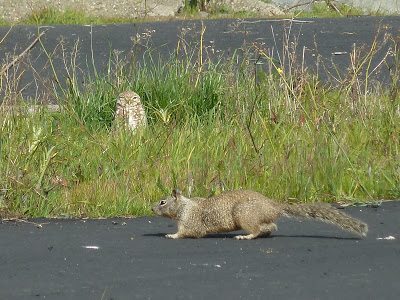Sutro Forest – conservation gem or lost opportunity?
People who live outside of San Francisco are often unaware of the existence of this small open space preserve in the middle of San Francisco.
Mount Sutro is the northernmost forested peak of the San Francisco Central Highlands that continue south through Twin Peaks and Mount Davidson, all with summits in the 900-foot range. The south-east saddle between Mount Sutro and Twin Peaks sports the big red and white TV tower that is sometimes the only thing visible above the summer fog. The north slope of Mount Sutro is home to the Parnassus Campus of the UCSF Medical School–and 61 acres surrounding the summit contains Mount Sutro Open Space Preserve. Together with the contiguous San Francisco Interior Greenbelt, this parcel represents the largest remaining fragment of a massive forest planted beginning in 1886 by Adolf Sutro.
Today, blue gum eucalyptus trees of differing ages cover most of the preserve, along with scattered cypress and pine trees. Fog caught by the canopy drips into the forest, and in places sword ferns and moss line the trails, which remain muddy long after the last rain.
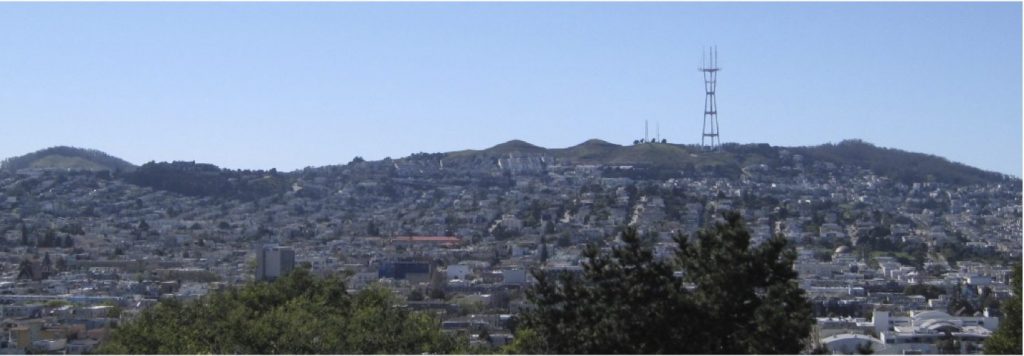 SF central highlands: The righthand forested peak is Mt. Sutro, while the left peak is Mt. Davidson. / Photo by Patricia Greene
SF central highlands: The righthand forested peak is Mt. Sutro, while the left peak is Mt. Davidson. / Photo by Patricia Greene
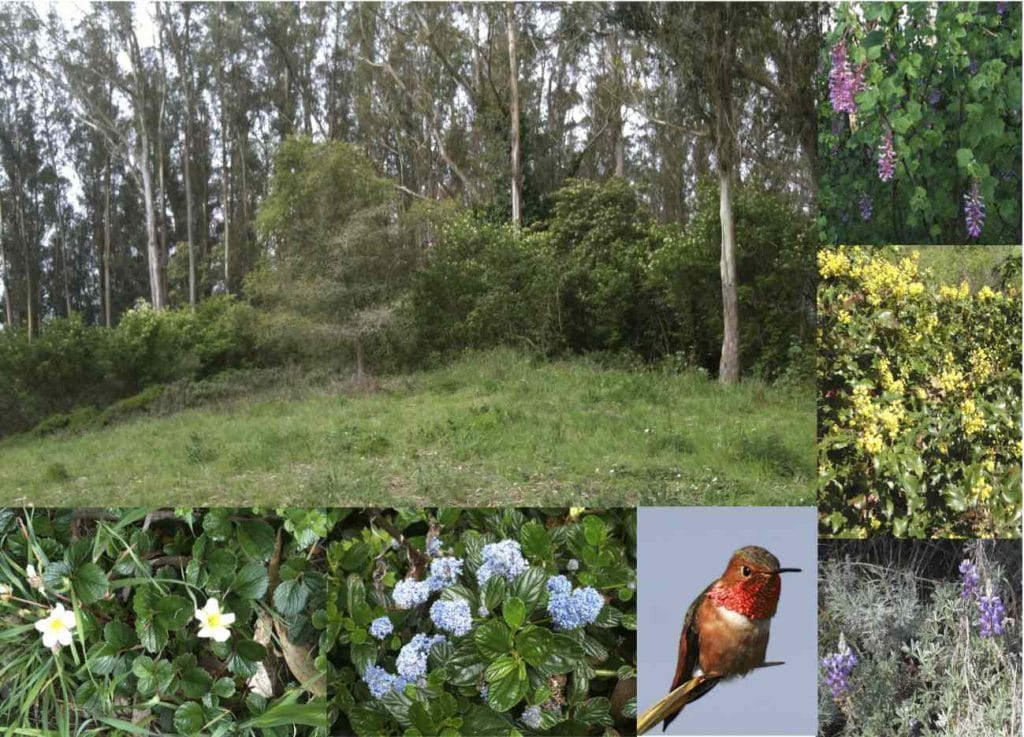 Rotary Meadow with (clockwise) Pink Currant, Barberry, Lupine/sage, Allen’s Hummingbird, Ceanothus, and Wild Strawberry. Photos by Patricia Greene except for hummingbird by Bob Lewis.
Rotary Meadow with (clockwise) Pink Currant, Barberry, Lupine/sage, Allen’s Hummingbird, Ceanothus, and Wild Strawberry. Photos by Patricia Greene except for hummingbird by Bob Lewis.
In several places, the middle canopy contains Blackwood Acacia and Red Elderberry. Some areas also contain flowering plums that produce ethereal blooms in the spring as the branches reach for light. Most of the understory is dense Himalayan Blackberry and Cape and English ivy that has climbed many of the trees.
The southern slope was heavily thinned in 1935 and the summit was clearcut in the 1950s to accommodate a NIKE radar site. The summit has now been restored to a native plant meadow created using volunteer labor and a grant from the Rotary Club. Sometimes walking on the adjacent Twin Peaks can be harsh, windy and cold, while walking on Mt. Sutro is sheltered and peaceful.
The forest has always had a few well-traveled trails, but recently a network of well-graded trails has been built or improved by the volunteer hard labor of the Sutro Stewards and community volunteers under the direction of Craig Dawson. One of the exciting surprises of trail building was that when a few trees were felled and the Himalayan Blackberry and Ivy were cleared for construction, beautiful, long-dormant native plants sprang to life along the trails in several places.…

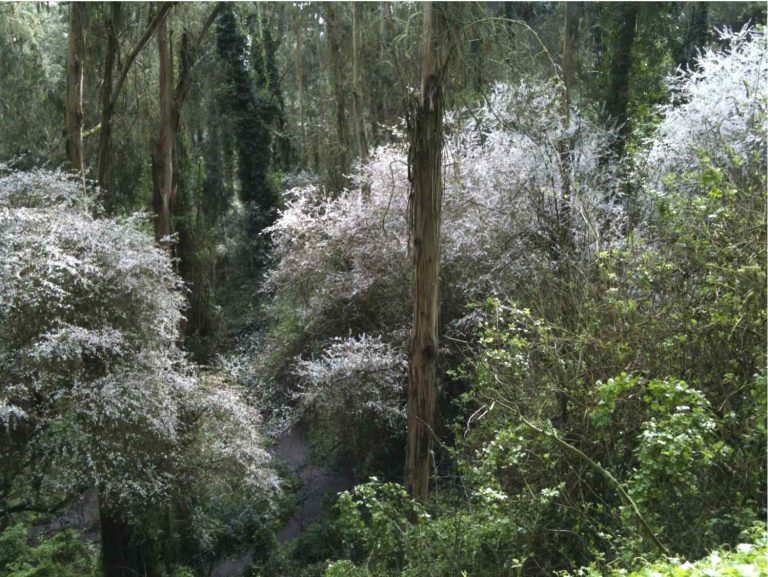
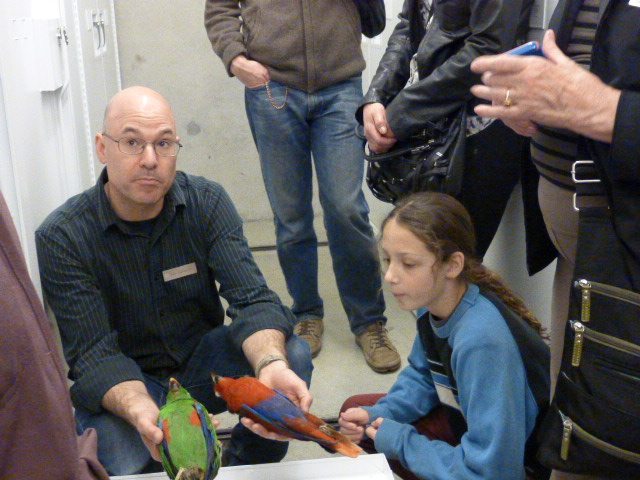
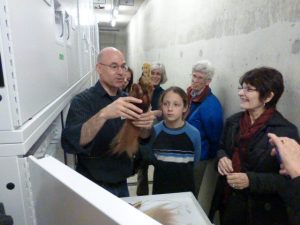
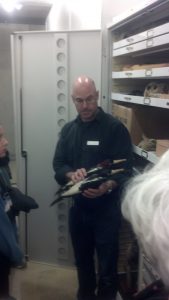




 A pair of crows on a telephone wire. Photo: Elaine Miller Bond
A pair of crows on a telephone wire. Photo: Elaine Miller Bond A raven: the larger, deeper voiced cousin of the crow, also on the increase locally. Photo: Elaine Miller Bond
A raven: the larger, deeper voiced cousin of the crow, also on the increase locally. Photo: Elaine Miller Bond
